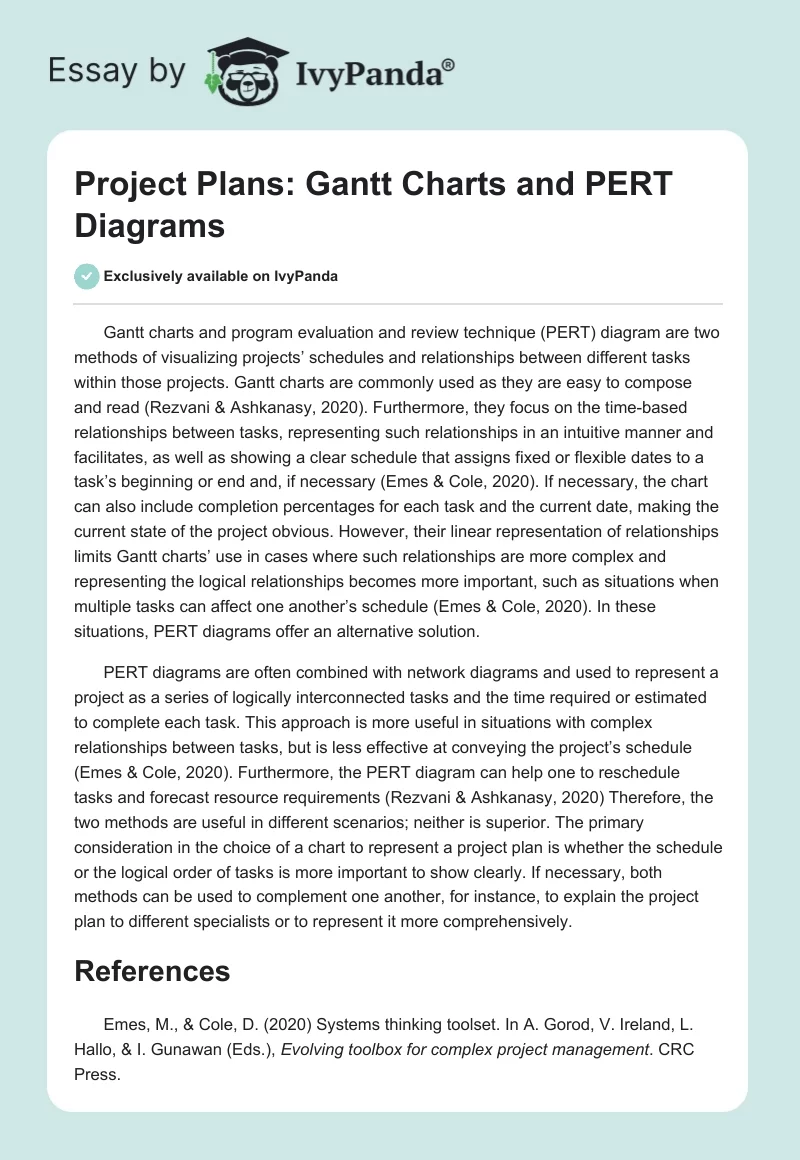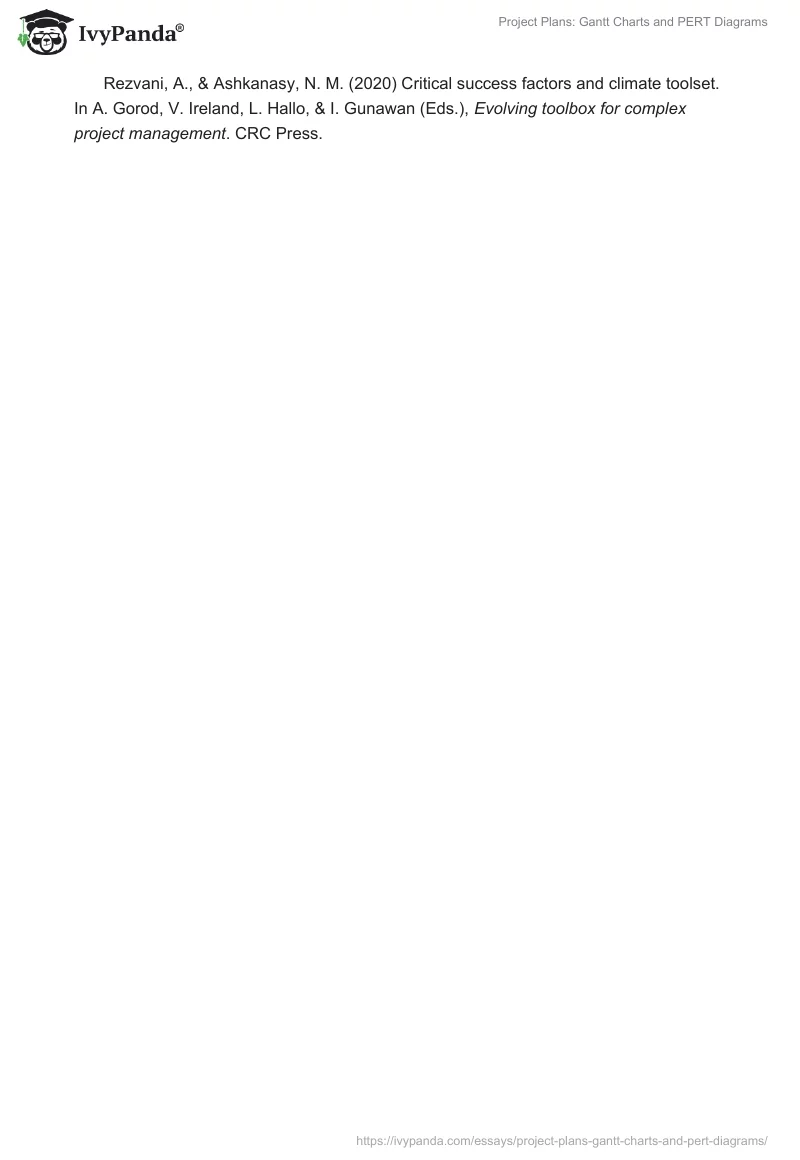Gantt charts and program evaluation and review technique (PERT) diagram are two methods of visualizing projects’ schedules and relationships between different tasks within those projects. Gantt charts are commonly used as they are easy to compose and read (Rezvani & Ashkanasy, 2020). Furthermore, they focus on the time-based relationships between tasks, representing such relationships in an intuitive manner and facilitates, as well as showing a clear schedule that assigns fixed or flexible dates to a task’s beginning or end and, if necessary (Emes & Cole, 2020). If necessary, the chart can also include completion percentages for each task and the current date, making the current state of the project obvious. However, their linear representation of relationships limits Gantt charts’ use in cases where such relationships are more complex and representing the logical relationships becomes more important, such as situations when multiple tasks can affect one another’s schedule (Emes & Cole, 2020). In these situations, PERT diagrams offer an alternative solution.
PERT diagrams are often combined with network diagrams and used to represent a project as a series of logically interconnected tasks and the time required or estimated to complete each task. This approach is more useful in situations with complex relationships between tasks, but is less effective at conveying the project’s schedule (Emes & Cole, 2020). Furthermore, the PERT diagram can help one to reschedule tasks and forecast resource requirements (Rezvani & Ashkanasy, 2020) Therefore, the two methods are useful in different scenarios; neither is superior. The primary consideration in the choice of a chart to represent a project plan is whether the schedule or the logical order of tasks is more important to show clearly. If necessary, both methods can be used to complement one another, for instance, to explain the project plan to different specialists or to represent it more comprehensively.
References
Emes, M., & Cole, D. (2020) Systems thinking toolset. In A. Gorod, V. Ireland, L. Hallo, & I. Gunawan (Eds.), Evolving toolbox for complex project management. CRC Press.
Rezvani, A., & Ashkanasy, N. M. (2020) Critical success factors and climate toolset. In A. Gorod, V. Ireland, L. Hallo, & I. Gunawan (Eds.), Evolving toolbox for complex project management. CRC Press.


